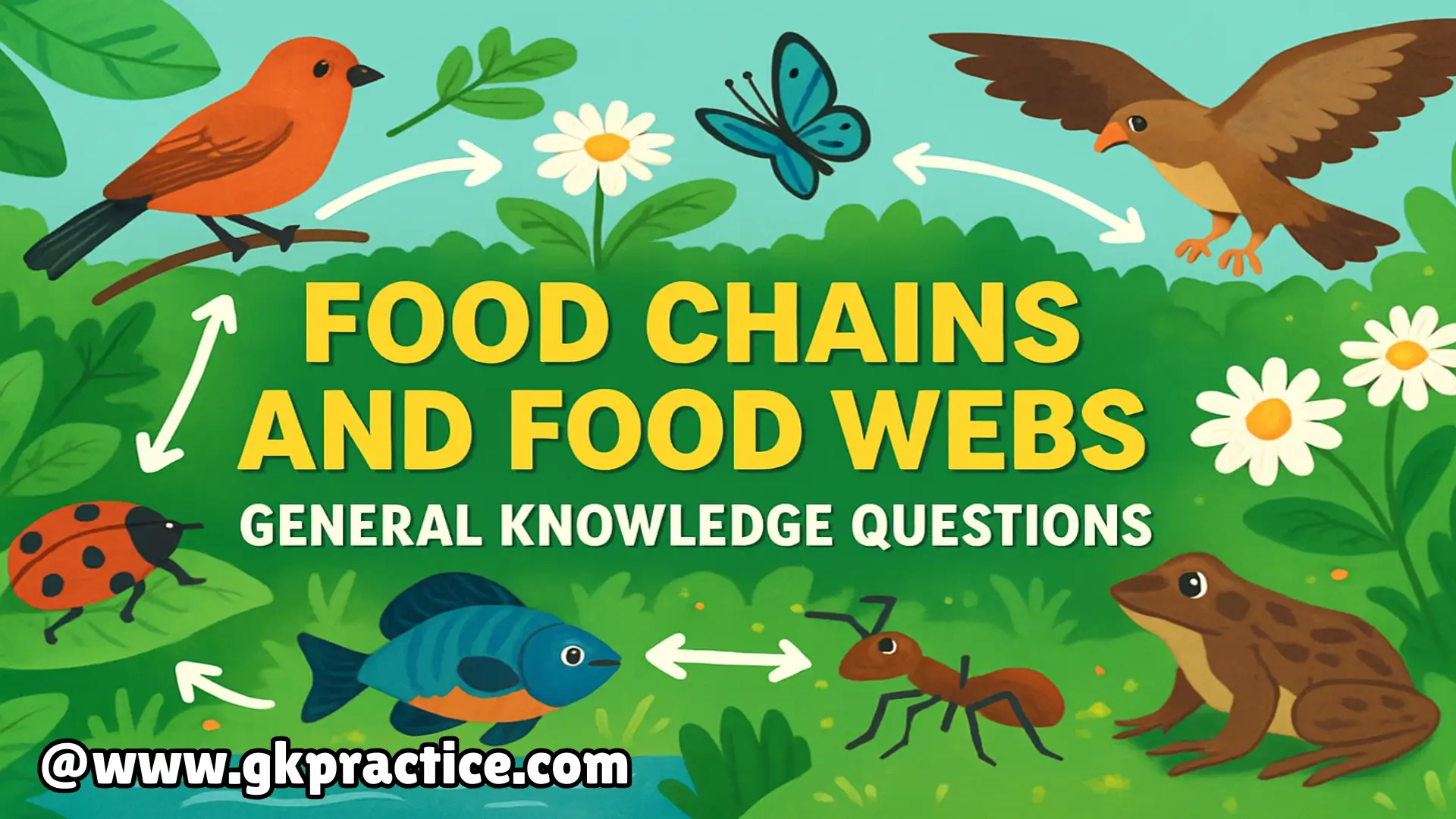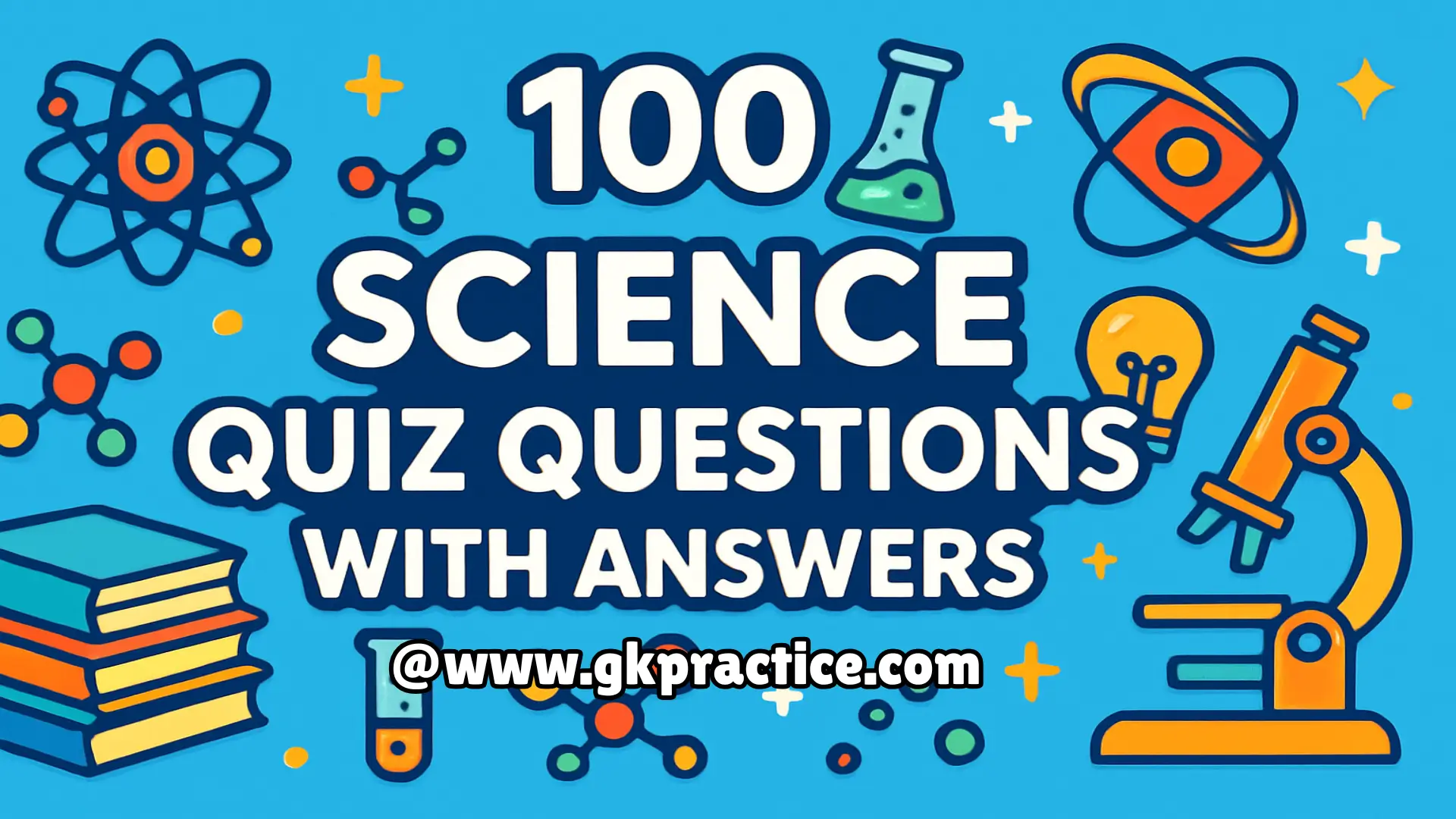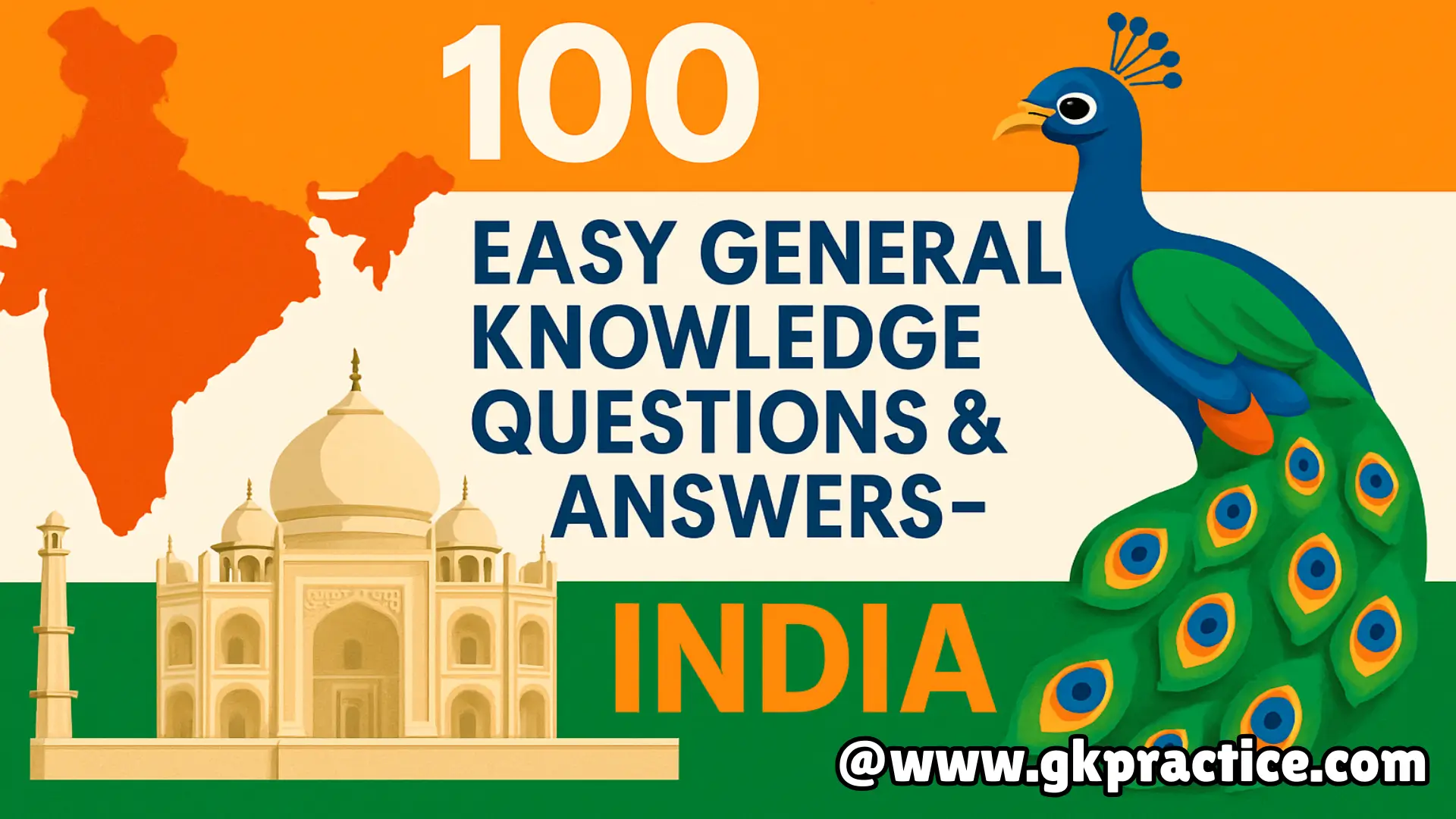Explore important Food Chains And Food Webs General Knowledge Questions covering Indian ecosystems. Understand food chains, food webs, energy flow, and key species interactions with detailed explanations. Ideal for students, quiz enthusiasts, and exam preparation.
📝 Challenge Yourself with Food Chains And Food Webs General Knowledge Questions in Indian Ecosystems:-
Q1) Which of the following is the primary producer in the mangrove ecosystem of the Sundarbans?A) Fish
B) Shrimp
C) Mangrove trees
D) Crabs
Explanation: In the Sundarbans, mangrove trees act as primary producers, using sunlight for photosynthesis. They form the base of the food chain, supporting herbivores like crabs and insects, which in turn are consumed by fish, birds, and higher predators such as tigers and crocodiles.
Q2) In Indian grasslands, which animal typically acts as a primary consumer?
A) Tiger
B) Grasshopper
C) Vulture
D) Eagle
Explanation: Grasshoppers feed directly on grasses and other vegetation, making them primary consumers in Indian grassland ecosystems. They pass on energy from plants to secondary consumers like lizards and frogs, forming an essential link in the flow of energy in the ecosystem.
Q3) Which bird is considered a tertiary consumer in Indian agricultural ecosystems?
A) House Sparrow
B) Crow
C) Owl
D) Pigeon
Explanation: Owls are carnivorous birds feeding on rodents, snakes, and smaller birds. As tertiary consumers, they occupy a high position in agricultural food webs, helping control pest populations and maintaining ecological balance in farmlands across India.
Q4) What role do phytoplankton play in Indian freshwater lakes?
A) Secondary consumers
B) Primary producers
C) Tertiary consumers
D) Decomposers
Explanation: Phytoplankton are microscopic plants that photosynthesize, forming the primary producers in freshwater food chains. They provide food for zooplankton, which are eaten by fish, and ultimately support birds and humans who rely on freshwater ecosystems for sustenance.
Q5) In Indian forests, which animal is an apex predator in the food web?
A) Deer
B) Tiger
C) Monkey
D) Hare
Explanation: The tiger sits at the top of the food chain in Indian forests. As an apex predator, it preys on herbivores like deer and wild boar, keeping their populations in check. Its presence ensures the stability and balance of the entire forest ecosystem.
Q6) In a desert food chain of Rajasthan, which plant commonly serves as the primary producer?
A) Neem
B) Cactus
C) Banyan
D) Teak
Explanation: Cacti, such as Opuntia, thrive in Rajasthan deserts and act as primary producers. They store water and carry out photosynthesis, supporting herbivores like camels and rodents. These herbivores, in turn, are eaten by carnivores like desert foxes and snakes.
Q7) What is the main diet of vultures in Indian food webs?
A) Fruits
B) Dead animals
C) Freshwater fish
D) Green plants
Explanation: Vultures are scavengers in Indian ecosystems, feeding primarily on carrion (dead animals). They play a critical role in nutrient recycling, preventing the spread of diseases by cleaning up carcasses, and maintaining ecological balance in forests and grasslands.
Q8) Which species acts as a decomposer in almost all Indian ecosystems?
A) Earthworm
B) Parrot
C) Leopard
D) Cobra
Explanation: Earthworms break down organic matter like fallen leaves, animal waste, and dead organisms into simpler nutrients. This decomposition process enriches the soil, making nutrients available for plants and thereby supporting the beginning of the food chain again.
A) Zooplankton
B) Small fish
C) Aquatic plants
D) Kingfisher
Explanation: Small fish feed on zooplankton, making them secondary consumers in river food chains. They are then preyed upon by larger fish, birds like kingfishers, and humans, forming a vital link in the transfer of energy and biomass in aquatic ecosystems.
Q10) Which organism connects both terrestrial and aquatic food webs in Indian wetlands?
A) Frog
B) Snake
C) Buffalo
D) Peacock
Explanation: Frogs feed on insects and are prey for snakes, birds, and fish. They live in both land and water, thus linking terrestrial and aquatic food webs. Their dual role helps maintain balance in wetlands, making them key indicator species of ecosystem health.







